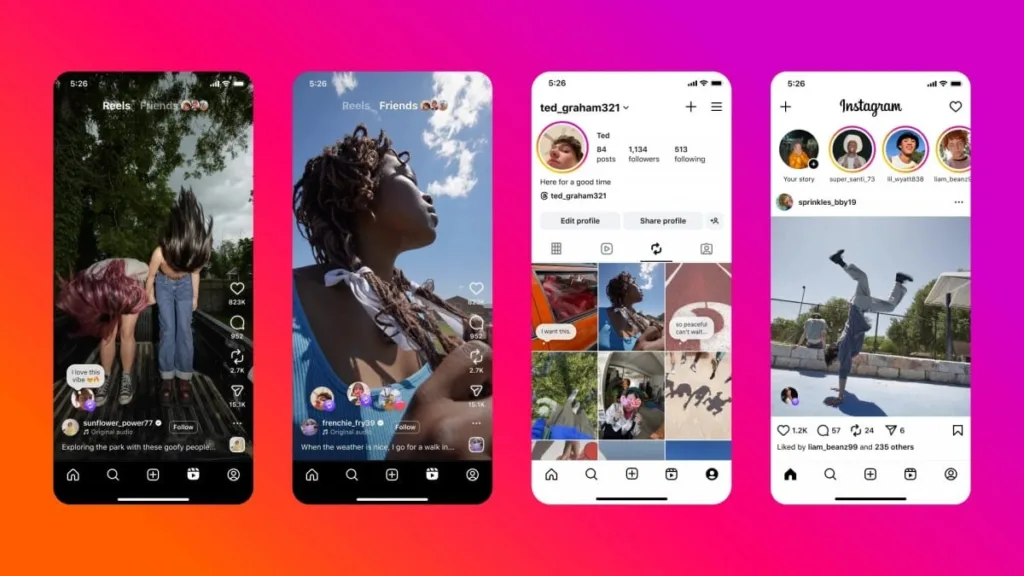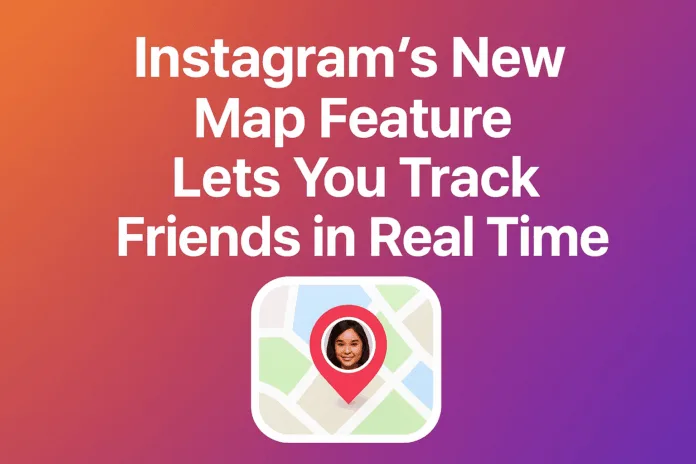Table of Contents
Instagram Map Feature: A New Step in Real-Time Social Connection
Instagram has officially introduced a new Map feature that lets users track their friends in real time, expanding the app’s social and interactive experience. This feature, currently rolling out to users in the United States, mirrors the location-sharing tools found in Snapchat’s Snap Map and Apple’s Find My app. However, Instagram’s version blends real-time location data with content discovery, allowing users to explore places their friends and favorite creators visit.
At Squaredtech, we recognize that this marks a significant moment for how social platforms merge location and social networking. Instagram’s decision to launch this feature shows how location-based interaction is becoming central to modern communication. Users are now not only sharing photos and stories but also the context of where those moments happen transforming how communities connect online and offline.

The feature is opt-in, which means users must actively choose to share their location. Once activated, the Instagram Map can be accessed through a small circle icon on the messages page. Tapping this circle opens an interactive map, displaying which friends are nearby and what places they have recently engaged with. Whether it’s discovering a new café, joining friends at an event, or seeing what spots influencers are visiting, this update makes social exploration more interactive and local.
From an analytical standpoint, Squaredtech sees this as part of a larger shift in how platforms use contextual engagement moving beyond text and visuals to connect users through time and place. Instagram is leveraging location as an extension of its storytelling ecosystem.
Check Out Our Article of Instagram’s Bold Move: Reels App to Rival TikTok Published on March 4, 2025 SquaredTech
Key Features, Controls, and Privacy Measures
Instagram’s Map feature offers several layers of control and privacy. By default, location sharing is turned off, and users’ locations are only updated when the app is open. This gives individuals full authority over when their data is visible and who can see it.
The privacy settings are flexible and detailed. Users can:
- Share their live location with a select group, such as their Close Friends list.
- Hide their location from specific people or areas.
- Decide how long to share their live position before it automatically stops updating.
This level of control demonstrates how Instagram is balancing social functionality with data protection. As a digital innovation firm, Squaredtech emphasizes that clear user control is critical in building trust in such technologies. Users today are far more aware of privacy implications than before. Instagram’s choice to make this feature opt-in reflects a growing trend of respecting personal boundaries while still enhancing connection.
The new Map also extends beyond personal tracking. It includes exploration tools that help users discover new local spots and events. If a creator shares content tagged with a location, users can tap to see where it’s happening and view related posts in the same area. This feature encourages engagement with real-world spaces, turning digital activity into physical experiences.
However, this brings potential drawbacks. Many local businesses that gain sudden online attention often face an influx of visitors that can overwhelm their operations. Our analysts note that this phenomenon sometimes referred to as “social media crowding” is becoming increasingly common. What was once a quiet neighborhood café can quickly turn into an influencer hotspot, altering the dynamics of the local community.
Despite this, the Map feature offers a positive shift toward real-time connection. It gives users a richer sense of what’s happening nearby and how their friends are engaging with local events. This aligns with Instagram’s broader mission to keep users more connected through live and location-based experiences.
The Social Impact and What It Means for Users
From a social interaction perspective, Instagram’s Map feature signals a growing cultural desire for immediacy. People want to share what they are doing as it happens, not hours later. This real-time approach helps users feel more present with their friends, even when physically apart.
We interpret this as a reflection of a larger technological trend: digital proximity. Instead of relying solely on likes or comments, users can now experience shared presence knowing that someone they care about is nearby or visiting a familiar spot. This makes digital communication more emotional and grounded.
That said, the introduction of live location sharing also raises privacy and safety concerns. Many users may not realize how revealing constant location sharing can be. Even though Instagram has included strong privacy options, users still need to understand the implications of enabling the feature. Squaredtech encourages users to regularly check who can see their location and disable sharing when not necessary.
The company’s rollout strategy also reveals Instagram’s attempt to compete with existing social location tools. Snapchat’s Snap Map popularized this kind of feature years ago, and Apple’s Find My has long been trusted for private tracking. Instagram is now combining these ideas within a platform primarily built for visual storytelling merging location, content, and community in one ecosystem.
The addition of this feature could influence marketing strategies as well. Businesses, influencers, and local creators might use the Map tool to promote nearby events or highlight specific venues. As we note, this kind of interactive location marketing can reshape local discovery shifting user attention from broad online searches to real-time recommendations within social apps.

A Balanced Approach to Connectivity and Privacy
Instagram’s Map feature represents a new chapter in how digital platforms handle real-time presence. While it enhances social connection and discovery, it also challenges users to think carefully about what they share.
From Squaredtech’s analytical perspective, the launch shows that Instagram is leaning heavily into real-world integration. The company is no longer just about photos or videos it’s about making users feel connected to places and people through active engagement. This approach could make Instagram even more central to daily social life, but it must be accompanied by responsible data management.
Privacy remains a major consideration. Even with controls in place, location data carries inherent risks. We emphasize that users should approach this feature mindfully using it to coordinate with friends, discover new experiences, and support local businesses, while staying aware of the digital footprint they leave behind.
The platform’s success with this update will depend on how users balance convenience with caution. For many, the Map will be a useful tool for planning meetups, exploring new spots, or seeing live events nearby. For others, it might raise questions about digital boundaries and data exposure.
What’s certain is that Instagram’s Map feature demonstrates a clear evolution in social media functionality. Real-time sharing is no longer limited to photos or videos it now extends to movement, geography, and real-world context.
At Squaredtech, we view this innovation as both a step forward and a test for how social platforms will manage transparency and privacy in the future. Instagram’s success will depend on maintaining that delicate balance enabling connection without sacrificing control.
Stay Updated: Mobile


